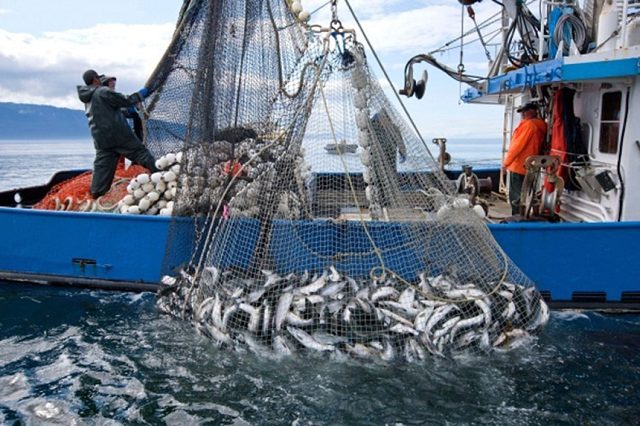Nigeria depends on foreign markets to supply 2.2 million tons of fish deficit in the local market, this was made known by the Permanent Secretary, Federal Ministry of Agriculture and Rural Development, Ernest Umakhihe last Thursday.
He made the disclosure at a conference on the transformation and future of aquatic food systems in Nigeria held in Abuja.
Umakhihe disclosed that the total demand for fish in the country is currently at 3.6 million tons yearly, while the local output stands at 1.1 million tons, comprising aquaculture, artisanal and industrial sector.
He further stated that there are 10 million Nigerians involved in primary and secondary fisheries operations. He also noted that fisheries contributes 4.5 percent to the national Gross Domestic Product (GDP).
He said the vision of President Muhammadu Buhari is to grow Nigeria’s agricultural sector to achieve a hunger-free nation, accelerate food production to address food and nutritional security, and transform Nigeria into a leading player in global food/fish market to reduce importation in a short, medium and long term basis.
“Permit me to mention that fish is one of the cheapest and predominant sources of animal protein in Nigeria. It accounts for about 50 per cent of total animal protein consumed in Nigeria with consumption of 17.5 Kg per person per year.
“In this regard, the total demand for fish is 3.6 million tons annually while Nigeria is producing 1.1million tons from all sources (aquaculture, artisanal and industrial sectors) leaving a deficit of about 2.5 million tons to be supplemented by importation,” he said.
READ ALSO: AfCTA: Nigeria Lacks Logistics Capacity To Fill Gap
He said the Ministry has played a key role in addressing aquatic food systems in Nigeria which include “backward integration policy of the government to encourage fish importers to go into commercial aquaculture (pond and cage culture) of fish and shrimp farming”.
In his Keynote Address, the Minister of Agriculture and Rural Development, Mohammed Sabo Nanono said despite the potential impacts of the fisheries and aquaculture resources, the sector is still confronted with numerous challenges including the high cost of inputs and use of unimproved breeds in aquaculture.














